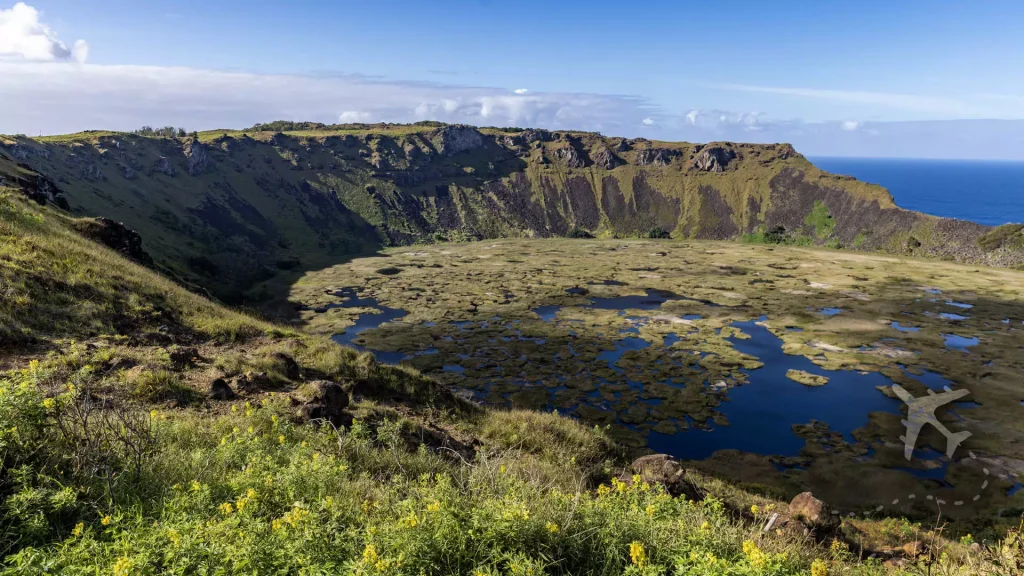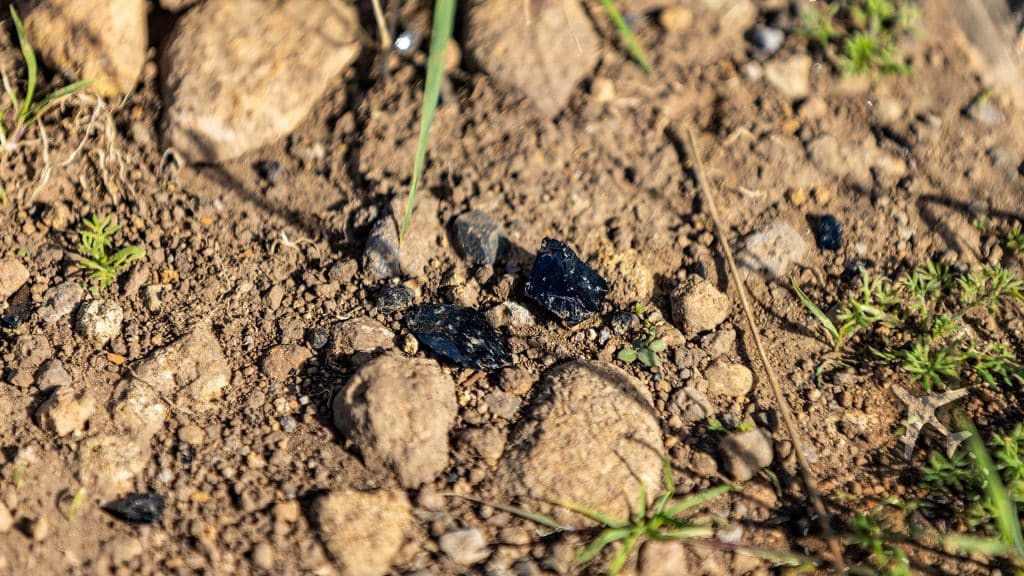- Your cart is empty
- Continue Shopping
The Volcano That Defines Easter Island’s Soul

If you’ve got a craving for adventure and a fascination with ancient cultures, the volcanic crater of Rano Kau on Easter Island (Rapa Nui) is the kind of place that makes your heart race. It’s not just a geological marvel; it’s a cultural and spiritual cornerstone for the island’s people and a prime spot for anyone wanting to walk in the shadow of ancient gods.
This isn’t your run-of-the-mill tourist destination. From its history as a hub of Rapa Nui civilization to the sharp, glittering shards of obsidian scattered across its slopes, Rano Kau is the definition of badass.
DESTINATION: Rano Kau
scattered clouds
(27 C
/ 81 F)
![]()
A Brief History of Rano Kau
Rano Kau is one of three central volcanoes that formed Easter Island, and it’s easily the most jaw-dropping. Rising over 1,000 feet above the Pacific, its massive crater stretches more than a mile in diameter and is partially filled by a freshwater lake surrounded by reeds. This lake is a rare resource on the island, with no permanent rivers or streams.

But the real story is in its connection to the Rapa Nui people. The crater’s cliffs and ridges were the stage for one of the island’s most fascinating traditions: the Tangata Manu, or Birdman ceremony. For centuries, this annual ritual determined who would wield political and spiritual power for the coming year. Competitors raced to retrieve the first egg of the sooty tern seabird from the nearby islet of Motu Nui, often risking their lives climbing the sheer cliffs of Rano Kau to achieve glory.
A Cultural Keystone
For the Rapa Nui people, Rano Kau wasn’t just a geological feature but a sacred space. The village of Orongo, perched right on the rim of the crater, was a ceremonial hub. Its stone structures are decorated with petroglyphs depicting the Birdman and other symbols of spiritual power.
The obsidian found here adds another layer of mystique. The crater is littered with shards of this volcanic glass, which the ancient Rapa Nui used to make tools, weapons, and ritual items. Its sharp edges and jet-black sheen make it both practical and symbolic, a material imbued with the raw energy of the volcano itself.
Why Visit Rano Kau?
First off, Rano Kau is ridiculously photogenic. Whether you’re into landscapes or cultural tourism, this spot delivers. The crater’s rim offers panoramic views of the island and the endless Pacific, while the lake at the bottom feels like something out of a lost world.
Then there’s the energy of the place. Walking along the same paths that Rapa Nui leaders once trodden is nothing short of electrifying. The wind howls through the grasses; the waves crash against the distant cliffs, and the obsidian underfoot glints like ancient stars. You don’t just visit Rano Kau, you feel it.
Exploring Orongo
Located at the southwestern edge of the crater, Orongo is a must-visit. The village ruins include over 50 stone houses, many of which are semi-subterranean to protect against the elements. The petroglyphs here are among the best-preserved on the island and offer a glimpse into the spiritual life of the Rapa Nui.
It’s a stark reminder of how closely tied the people were to their environment. The Birdman ceremony may be long gone, but the stories live in the stone and the winds that whip across the crater.
Practical Info for Your Visit
- Getting There: Rano Kau is just a short drive from the island’s main town, Hanga Roa. Many tours include it as part of a package, but it’s also accessible for independent travelers.
- What to Bring: Sturdy shoes are a must, those obsidian shards are sharp! Don’t forget sunscreen and water; the crater rim is exposed, and the sun can be brutal.
- Best Time to Visit: Sunrise and sunset are magical, casting dramatic shadows across the crater and illuminating the lake below.
The Obsidian Factor
Obsidian is one of the coolest parts of Rano Kau. This volcanic glass, formed when lava cools rapidly, was a cornerstone of ancient Rapa Nui technology. While you’re walking the crater, keep an eye out for pieces of it scattered across the ground. Don’t pocket any; taking artifacts is illegal; trust me, you don’t want to mess with the island’s spiritual guardians.

The Takeaway
Rano Kau isn’t just a pretty crater; it’s a living piece of history. It’s a place where earth and culture collide, where the echoes of the past reverberate through every gust of wind and every shard of obsidian. Whether you’re a dark tourist, a history buff, or someone who loves a killer view, Rano Kau is the destination that stays with you long after you leave.
Pack your sense of adventure and make your way to Rano Kau. This isn’t just a trip; it’s a journey into the soul of one of the world’s most remote and fascinating places.




